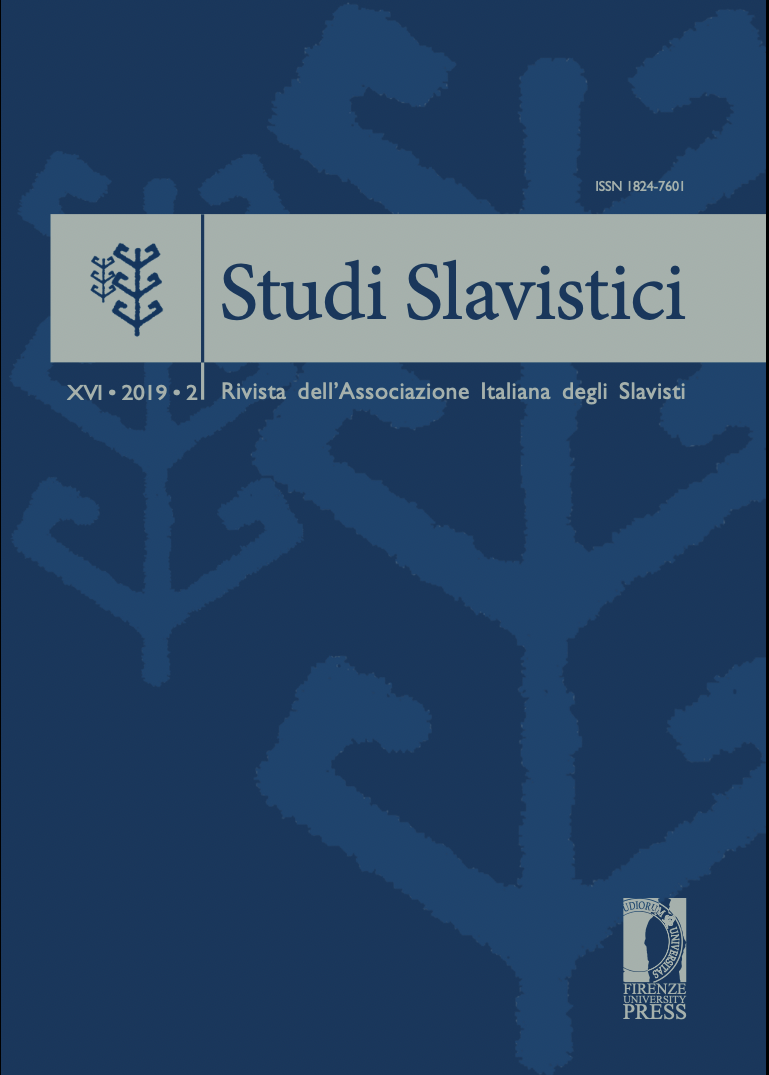Utopia e distopia nella prosa di Vladimir Odoevsky. Alcuni indizi nelle opere giovanili
Abstract
Utopia and Dystopia in V.F. Odoevsky's Fiction: some Clues in his Early WritingIn Russian literature utopia and dystopia are often tightly interwoven. Also in the work of V.F. Odoevsky (1804-1869) some texts commonly defi ned as ‘utopian’ are in fact intertwined with a dark irony that seemingly leaves very little room for hope. However, Odoevsky’s dystopias should never be taken literally, on the contrary it is necessary to consider the specifi c cultural context in which they are placed, i.e., the paradoxical debate inspired by Menippean satire. The purpose of this paper is to identify in the writer’s two early texts, The Old People, or The Isle of Panchaia (1824) and Two Days in the Life of the Terrestrial Globe (1828), the presence of narrative elements which can be attributed to the utopian/dystopian topos and to define their principal features and probable derivative texts. In so doing, all the clues indispensable for an exhaustive reconstruction of the artistic process will be brought together, a process which, at the end of the 1830s, led to the genesis of two of Odoevsky’s famous dystopias set in the frame novel Russian Nights (1844), i.e, The Last Suicide and The City Without a Name (first published in 1839), as well as the unfinished The Year 4338 (1835-40).


